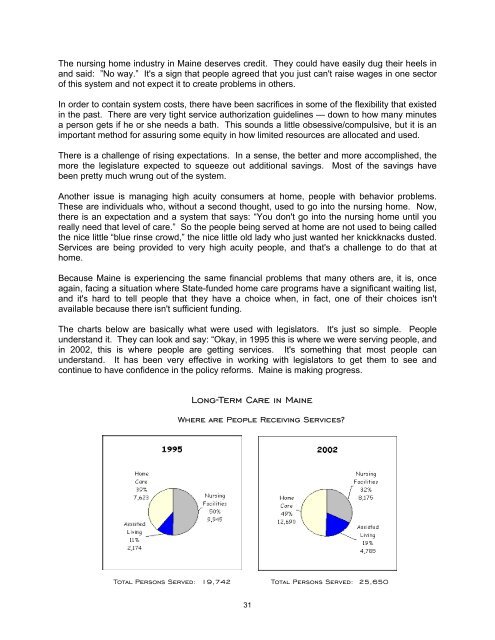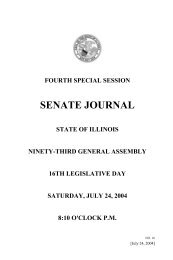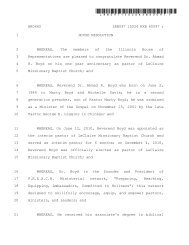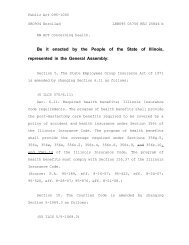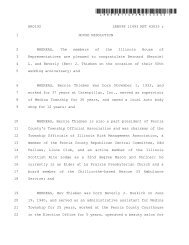Long-Term Care - Illinois General Assembly
Long-Term Care - Illinois General Assembly
Long-Term Care - Illinois General Assembly
Create successful ePaper yourself
Turn your PDF publications into a flip-book with our unique Google optimized e-Paper software.
The nursing home industry in Maine deserves credit. They could have easily dug their heels in<br />
and said: ”No way.” It's a sign that people agreed that you just can't raise wages in one sector<br />
of this system and not expect it to create problems in others.<br />
In order to contain system costs, there have been sacrifices in some of the flexibility that existed<br />
in the past. There are very tight service authorization guidelines — down to how many minutes<br />
a person gets if he or she needs a bath. This sounds a little obsessive/compulsive, but it is an<br />
important method for assuring some equity in how limited resources are allocated and used.<br />
There is a challenge of rising expectations. In a sense, the better and more accomplished, the<br />
more the legislature expected to squeeze out additional savings. Most of the savings have<br />
been pretty much wrung out of the system.<br />
Another issue is managing high acuity consumers at home, people with behavior problems.<br />
These are individuals who, without a second thought, used to go into the nursing home. Now,<br />
there is an expectation and a system that says: “You don't go into the nursing home until you<br />
really need that level of care.” So the people being served at home are not used to being called<br />
the nice little “blue rinse crowd,” the nice little old lady who just wanted her knickknacks dusted.<br />
Services are being provided to very high acuity people, and that's a challenge to do that at<br />
home.<br />
Because Maine is experiencing the same financial problems that many others are, it is, once<br />
again, facing a situation where State-funded home care programs have a significant waiting list,<br />
and it's hard to tell people that they have a choice when, in fact, one of their choices isn't<br />
available because there isn't sufficient funding.<br />
The charts below are basically what were used with legislators. It's just so simple. People<br />
understand it. They can look and say: “Okay, in 1995 this is where we were serving people, and<br />
in 2002, this is where people are getting services. It's something that most people can<br />
understand. It has been very effective in working with legislators to get them to see and<br />
continue to have confidence in the policy reforms. Maine is making progress.<br />
<strong>Long</strong>-<strong>Term</strong> <strong>Care</strong> in Maine<br />
Where are People Receiving Services?<br />
Total Persons Served: 19,742 Total Persons Served: 25,650<br />
31


